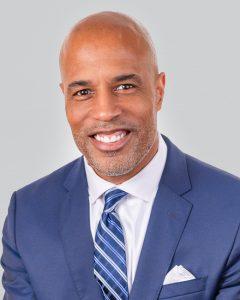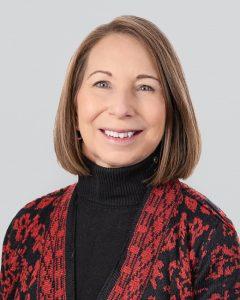VOICES
No more random acts of professional learning
By Frederick Brown and Sharron Helmke
Categories: Fundamentals, Implementation, Leadership, Learning systems/planning, System leadershipAugust 2021
As schools seek to heal their communities after more than a year of disruption, professional learning is key to ensuring that educators at every level have the knowledge and capacity to meet students’ and staff members’ needs.
It may be tempting to address the list of needs one at a time, from academic catch-up to student mental health to teacher burnout. But random acts of professional learning do not ensure student success. Districts need a comprehensive approach to professional learning that aligns goals and strategies across the entire system.
District leaders have an opportunity to reset their professional learning efforts, thanks to new funding from reinvestment and recovery programs as well as a mandate for innovative solutions to unprecedented challenges. Instead of adopting piecemeal programs, leaders should be focused on a cohesive vision and aligning resources and efforts to address common goals.
As Sean Worley and Scott Palmer (2021) wrote in a recent blog post for The Wallace Foundation about how to use American Rescue Plan funds, “Don’t just fill holes, plant seeds.” When you plant seeds, you are investing in the long-term future of your district and your students.
At Learning Forward, we are encouraged by the number of districts reaching out to us for comprehensive professional learning planning and support. Through our professional services work with these districts, we have learned that the following elements are key for success.
A districtwide approach to professional learning starts with a logic model. Logic models have a defined set of student goals and connect all initiatives and the work of all staff, from upper-level leaders to cafeteria workers and everyone in between, to those goals. In districts who have worked with us on developing a common logic model, like South Bend (Indiana) Community School Corporation, we observe shared purpose and consistent language that leads to powerful change for teaching and learning.
In contrast, when we observe districts where the mission and goals, strategic plan, and campus improvement plans are treated as separate efforts, leaders often struggle with prioritizing attention and effort, leaving teachers confused about how to implement improvement efforts that may feel disconnected and overwhelming.
Top-level leadership is essential. In the districts where we see the most traction with comprehensive professional learning for improved practice, like in Fort Wayne (Indiana) Community Schools, the superintendent is directly and consistently involved.
Through more than 10 years of work in Fort Wayne, then-superintendent Wendy Robinson participated alongside teachers and central office staff in planning and professional learning. That kind of engagement sends a powerful message and cements the commitment to common goals and language. This commitment is needed to scale and sustain best practice.
Vertical alignment is as important as horizontal alignment. Leaders often recognize the importance of all teachers engaging in consistent professional learning community (PLC) structures, using common assessments, and other strategies for horizontal alignment. But less commonly do they recognize the importance of vertical alignment, making the work at one level contribute to and set up the conditions for the work at the next level.
Although the work of central office is ultimately in support of students, teachers often say they don’t see the district’s work as relevant to their classrooms — or they believe it is actually causing more problems and stress for them. Connections among the levels must be clear and consistent. That kind of alignment is the glue that holds a districtwide professional learning approach together.
We are seeing this approach in Arlington, Virginia, where the district has identified leadership competencies for the entire organization and is considering working toward them in communities of practice designed for everyone from bus drivers to teachers to central office staff.
Thoughtful problems of practice create cohesion across levels. Problems of practice focus educators’ attention on specific needs and goals and drive the collaborative identification of strategic steps to improvement. Engaging staff from all levels in identifying common or connected problems of practice is the glue that brings all of the professional learning work into alignment and turns organizations from a series of silos into learning systems.
Although specific problems of practice may look somewhat different for district leaders and teachers’ PLCs, they should be aligned and focused on common goals to ensure success for all students.
These elements put districts on the path to a systemic approach to professional learning and therefore improving all educators’ practice to meet students’ evolving needs. Recovery and reinvestment funds can be a major asset for these efforts, but only if they are invested strategically and systemically.
The Council of the Great City Schools (2021) created a tool kit to help districts make those decisions wisely. It includes six questions that start with how the investments you’re considering address current and long-term student needs and how they advance the strategic plan, instructional priorities, vision, mission, and goals of the district.
We encourage you to engage in this kind of strategic thinking across your entire system, with professional learning as the backbone that builds capacity to address your goals and the initiatives that support them.
For more information about our professional services, contact Sharron Helmke, acting vice president, professional services at Learning Forward, at sharron.helmke@learningforward.org.
References
Council of the Great City Schools. (2021). Investing American Rescue Plan funds strategically and effectively: Guidance for school districts. Author. www.cgcs.org/cms/lib/DC00001581/Centricity/Domain/360/CGCS_Funds%20Resource%20Guide_v10.pdf
Worley, S. & Palmer, S. (2021, August 4). American Rescue Plan: Five things state and district leaders need to know now. Wallace Blog. www.wallacefoundation.org/news-and-media/blog/pages/american-rescue-plan-five-things-state-and-district-leaders-need-to-know-now.aspx.

Frederick Brown is Learning Forward’s president | CEO. Fred is an education visionary who knows firsthand that our nation’s schools need transformational change if we are to meet the challenges of the next decades. Fred advocates that every child deserves to reach their highest potential and every educator must have the opportunity to participate in exemplary, ongoing, professional learning programs to provide students the skills needed to meet their unique needs.
Supporting educators at all levels and improving student achievement are through lines of Fred's career. An elementary school teacher, a middle school assistant principal, and school principal, Fred saw firsthand the impact high-leverage instructional practices and school culture have on school success.
Fred is a frequent speaker on leadership and building high-quality learning in schools. He has co-authored two books that have made significant contributions to the field of education, demonstrating how a comprehensive approach to professional learning can be achieved so that everyone in a system is a learner, and how principals apply a learning lens to their many critical responsibilities to create a productive climate for learning and collaboration. "Becoming a Learning System" and "The Learning Principal -- Becoming a Learning Leader" are time-tested Learning Forward resources for schools and leaders.

Sharron Helmke, senior vice president of professional services at Learning Forward, designs and manages the organization’s consulting service programs that support state, regional, and local organizations in translating their improvement and learning goals into custom-designed high-quality professional learning programs that result in scalable and sustainable change. During her twenty-plus years in education she has served in a variety of roles at the campus and district levels, including teacher, instructional coach, and district-based program administrator. She is an international coaching federation certified professional coach, a Gestalt professional coach, and a trauma-informed care provider, all of which inform her approach to supporting educators. She is the author of numerous professional articles, including “To make a difference for every student, give every new teacher a mentor” in the August 2022 issue of The Learning Journal.
Categories: Fundamentals, Implementation, Leadership, Learning systems/planning, System leadership
Recent Issues
LEARNING DESIGNS
February 2025
How we learn influences what we learn. This issue shares essential...
BUILDING BRIDGES
December 2024
Students benefit when educators bridge the continuum of professional...
CURRICULUM-BASED PROFESSIONAL LEARNING
October 2024
High-quality curriculum requires skilled educators to put it into...
LEARNING TO PIVOT
August 2024
Sometimes new information and situations call for major change. This issue...












